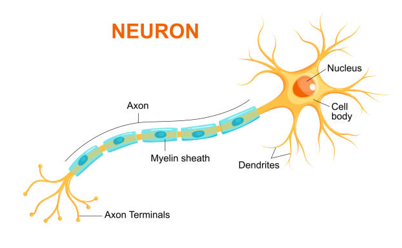Ijraset Journal For Research in Applied Science and Engineering Technology
- Home / Ijraset
- On This Page
- Abstract
- Introduction
- Conclusion
- References
- Copyright
Tracing the Epileptic Consequences of Neurocysticercosis
Authors: Abhineet Maini
DOI Link: https://doi.org/10.22214/ijraset.2022.40107
Certificate: View Certificate
Abstract
This Paper aims to provide a detailed overview of some basic and complex topics in the field of Neuroscience. Focusing on the overall occurrence of Action Potentials in Nerve cells, an insightful description of the processes which take place at the cellular and molecular levels is also provided. What follows is a discussion on how Neurocysticercosis, a parasitic infection which adversely affects the Central Nervous System, leads to Epileptic Consequences in the human body, as stated in the title. The explanation of these consequences contains vital information as to how such complex diseases and their consequences are merely errors in Action Potentials at the cellular level. With this, the paper also uses information from previously conducted studies, which found a causal linkage between Neurocysticercosis and Epilepsy.
Introduction
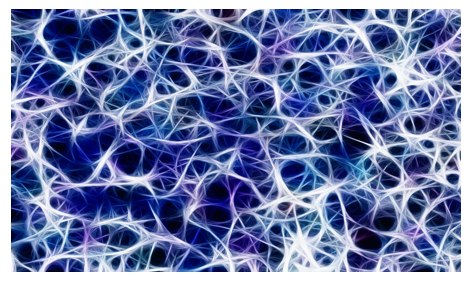
I. INTRODUCTION
A. Background
Our understanding of life is characterized by certain traits, which include Order, Response to Stimuli, Growth and Development, Evolutionary Adaptation, Reproduction etc. Such traits must be exhibited by an entity for it to be considered living. All living organisms exhibit these traits; such traits allow them to interact with their environment and contribute to the diversity of the Biosphere. Such interactions form the basis of Ecosystems. However, there is an underlying group of processes which makes the exhibition of such traits possible. Human Beings, for example, are able to exhibit such traits despite the complexity of what constitutes the human body because of the Control and Coordination of their body parts. The magical force which makes this coordination possible is an intricate construction of various processes, which the field of Neuroscience deals with. Neuroscience is the study of the Nervous System, which combines various generic disciplines of medicine, including Physiology, Anatomy and Biochemistry. The basic unit of the Nervous System is the Neuron, which is also referred to as the Nerve Cell. A unifying theme of all of Medicine is that Structure determines Function. A Neuron is structurally capable of performing all its functions, which include the transmission of messages from one cell to another. To understand this better, what follows is a brief overview of the basic Anatomy and Physiology of the Human Nerve Cell and the Impulses it transmits. Establishing the basics of such Neurological processes is necessary for the understanding of the complex diseases and ailments related to them.
B. Anatomy of a Neuron
As is well established by the Classic and Modern Cell Theories, the basic unit of life is the cell. The Nervous System is a combination of various organs, including the brain, which makes the transmission of information from one part of the body to the other possible. The unit at which the conversation of the Nervous System starts is the Neuron. As Figure 1 suggests, the Neuron has an elongated structure, which is exactly what makes the transmission of information possible. A Neuron receives information from other neurons or the environment at its dendrites, which are towards the right of the figure. All the information that is received by a nerve cell is integrated in the cell body, after which that information is transmitted through its Axon. The Axon may have intricate cells wrapped around it, which allow the information to travel a lot more readily down an Axon. They are called Myelin Sheaths, and are formed from Schwann Cells in the Peripheral Nervous System and Oligodendrocytes in the Central Nervous System. Voltage Gated Ion Channels are located between two Myelin Sheaths. An Axon begins at the Axon Hillock and goes all the way to the Axon Terminals, which are sites of Neurotransmitter release to other neurons through Synapses. A Neuron receives and sends information in the form of Neurotransmitters, which are synthesized in presynaptic terminals. Some examples of Neurotransmitters include Dopamine, Glutamate and Norepinephrine. There are two ways in which we can classify Neurons:
- Structural Classification: Neurons may be Multipolar, Bipolar, Unipolar or Anaxonic. Based on their structure, they are found in different parts of the body and transmit different types of information. The Structural Classification of Neurons is based on the number of poles extending out of the Cell Body.
2. Classification Based on the Direction of Informational Transmission: Based on where the information of a nerve impulse is headed, neurons are classified as Afferent or Efferent. Afferent Neurons carry information from Sensory Organs to the Central Nervous System, while Efferent Neurons carry information from the Central Nervous System to other parts of the body.
C. Physiology of a Nerve Impulse
A Nerve Impulse, in simple words, is the transmission of information through a Neuron. There are many factors which contribute to the occurrence of this process through a Neuron. The general understanding of a nerve impulse revolves around Three Stages: The Resting Potential, The Graded Potential and finally, The Action Potential.
- The Resting Potential: The Resting Potential refers to the state of a neuron prior to it interacting with any external information, or in a sense, its state of ‘rest’, although it isn’t actually at rest. The term Potential refers to a separation of charge between two given spaces, which may lead to the establishment of an Electrochemical gradient. In Neurons, an internal charge of -70 mV is established during the Resting potential. The electrochemical gradient which separates this Voltage exists because of chemical gradients of mainly Sodium (Na) and Potassium (K) ions. A higher concentration of Potassium ions exists inside the cell than its outside. However, the concentration of Sodium ions is relatively low inside the cell. As a result, both Potassium and Sodium ions have chemical gradients established, with Potassium’s net movement being targeted to be towards outside the cell, while Sodium’s net movement is targeted to be towards the inside of the cell. Due to the presence of leak channels in the membrane, there is movement of these two ions across the cell membrane. This movement is not sufficient for the separation of charges which would subsequently result in the establishment of the internal charge of -70 mV in the cell. This is where energy comes in. By active transport, the Sodium Potassium ion pump harnesses the energy of Adenosine Triphosphate by phosphorylation to pump out Three Sodium ions for every Two Potassium ions pumped in. In this way, the cell is able to maintain this separation of charges, which characterizes the Resting Potential of Neurons.
- The Graded Potential: The Graded Potential refers to whether the Neurotransmitter that a cell receives has the ability to trigger the actual transmission of information through its Axon, and subsequently, to other Neurons. Neurotransmitters may have Excitatory or Inhibitory Post Synaptic Potentials, which bring the internal charge of a Neuron in Resting Potential closer to or away from the Firing or the Action Potential Threshold (-55 mV). A cell can proceed with an Action Potential only if the internal charge of -55 mV is achieved. Excitatory Neurotransmitters bring the Neuron’s charge closer to the Firing Threshold, while Inhibitory Neurotransmitters take it away. An immediate way for Excitatory Neurotransmitters to do so is to attach to protein receptors of Chemically Gated Channels of the Cell Membrane, which opens these channels and allows for the influx of Sodium ions, bringing the internal charge of the cell closer to the Firing Threshold. Inhibitory Neurotransmitters allow the outflow Potassium ions, or the influx of Chlorine ions from the cell’s surroundings, which results in the internal charge of the cell to further drop. A Nerve Cell receives multiple Neurotransmitters at a time, and therefore what decides whether the cell is to trigger an Action Potential or not is the summation of all the signals that a cell receives. This means that a Neuron fires an Action Potential based on whether the entirety of the signals it receives are Excitatory or Inhibitory in nature. Such processes form the basis of determining the Graded Potential of a Neuron.
- The Action Potential: A cell must achieve the required -55 mV of internal charge to proceed with this stage of a Nerve Impulse. At -55 mV, Voltage Gated Channels of Sodium ions, which are present in the cell membrane, open to allow for a huge influx of Sodium ions in a process called Depolarization. As more and more positively charged Sodium ions enter the cell, the cell’s internal charge increases. As the charge reaches 30 mV, Voltage Gated Channels of Potassium ions open, allowing for a huge outflow of Potassium ions in a process called Repolarization. What follows is called Hyperpolarization, a state in which a Neuron re-establishes its Resting Potential. This is a state in which a Nerve Cell cannot fire another Action Potential. The influx of sodium ions through Voltage gated channels in one part of the Axon triggers such openings down the Axon, which is exactly how information is transmitted through an Axon. As the impulse progresses down an Axon, it reaches the Axon terminals. These are sites of Neurotransmitter release through some very intricate and interesting structures called Synapses.
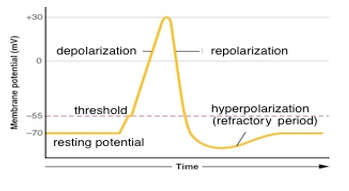
D. Synapses
Synapses are connections which make the transmission of information between Neurons possible. They are of two types: Chemical Synapses and Electrical Synapses. As Action Potentials progress and reach the Axon terminals, the Depolarization triggers the opening of Calcium ion channels in the membrane. Calcium ions have a chemical gradient established, with a higher concentration outside the cell than inside.
This results in an influx of Calcium ions. Neurotransmitters are present in vesicles in the Axon Terminals, which have chemicals on their surfaces to which Calcium ions bind and activate their ability to attach to other docking proteins on the Presynaptic Neuronic Axon Terminals, which subsequently allow for the merging of the membranes of transport vesicles with Axon Terminal ends. This results in the release of Neurotransmitters, which travel through the Synaptic Cleft to bind to receptor proteins of Chemically Gated Channels on the Postsynaptic neuron. After this, the process of a Nerve Impulse begins all over again.
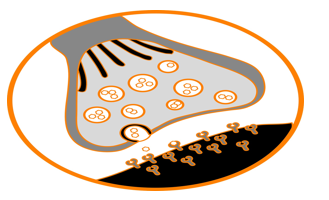
II. NEUROCYSTICERCOSIS
A. Overview
Cysticercosis is a helminthic infection; it is a result of the ingestion of eggs from the Pork Tapeworm, Taenia Solium. As this infection progresses into the Central Nervous System, it is called Neurocysticercosis.
This disease is acquired by consuming food that is contaminated with the feces of a T. Solium carrier. As humans digest these eggs as food, they are exposed to Gastric Acid in the stomach. This results in the cysts losing their protective capsule to become Oncospheres, after which they go on to enter the gastrointestinal tract and migrate via the vascular system to the brain, muscles and other intricate structures.
B. Epidemiology of Neurocysticercosis
Neurocysticercosis is one of the most common causes of Epilepsy, and is becoming one of the more important health issues in the United States. It is by far the most common parasitic infection of the Human Brain. Due to an increased amount of immigration of people from Latin American countries to the United States, there has been a remarkable increase in the number of cases per year in the country. Cysticercosis, as a generic disease, now accounts for up to 10% of ER visits for seizures in southwestern United States.
III. EPILEPSY
A. Overview
Epilepsy is a Neurological condition which is characterized by irregular brain activity, mainly exhibited by seizures. Seizures are characteristic symptoms of Epilepsy; they are triggered by a burst of electrical information being transmitted through Neurons. This, of course, has to do with irregular occurrences of Action Potentials. What follows is a detailed description of what exactly can go wrong during the course of a Nerve Impulse in an epileptic seizure.
B. Malfunctioning of Voltage Gated Sodium Ion Channels
Although the causes of Epilepsy are vast and varied, one of the leading causes of this disease is the malfunctioning of Voltage Gated Sodium Ion Channels, membrane proteins vital to the process of depolarization. This malfunctioning may be caused due to mutations of the membrane protein. This, scientifically implied, would result in an irregular influx of Sodium ions into the cell in the event of depolarization. It is important to remember that even one irregularity in a Neurological framework can cause a catastrophe. Irregular functioning of even one Voltage Gated Sodium Ion Channel would result in an improper charge separation between a cell and its environment, something that is vital for regular propagation of information in the Nervous System of the Human Body. Such irregular functioning can lead to stimulation of Action Potentials in the Human Body, which is the basis of seizures.
C. Epidemiology of Epilepsy
In 2015, 1.2% of the US population had active Epilepsy, with about 3,000,000 adults and 470,000 children affected. If Epilepsy originates in one given area of the brain, it is characterized as Focal Epilepsy. If the entire brain exhibits Epileptic traits, it is referred to as Generalized Epilepsy. If it is found that a given person’s Epilepsy cannot be classified as either Generalized or Focal, it is characterized as Unknown. Until now, over 70 Million people in the world have been affected by Epilepsy, and seizures can have drastic normal life implications.
IV. NEUROCYSTICERCOSIS AS A CAUSE OF EPILEPSY
Neurocysticercosis, as an infection, is a leading cause of Epilepsy and Seizures in a majority of the world. There is now enough data to conclude that there is a causal linkage between the two.
A. Overview of the 2006-07 Study
In a 2006-07 Study, 17,450 Individuals were evaluated in two community-based-cross-sectional studies to evaluate the prevalence of Epilepsy in the communities, and to further research on the then hypothesized causal linkage between Neurocysticercosis and Epilepsy. The aim of this study was to evaluate the prevalence of Neurocysticercosis in people with Epilepsy, using an observational study design, which aimed to identify people with Epilepsy, and look for Neurocysticercotic traces in them. This was done using two community based studies, evaluating a large amount of people. Further information on the dynamics of this study can be found at NCBI’s website, the link to which is provided in the Works cited page.
V. RESULTS
The results indicated that approximately 40% of individuals with epilepsy had Antibodies to Cysticercosis, indicating past exposure. Following is a graphical representation of the same:
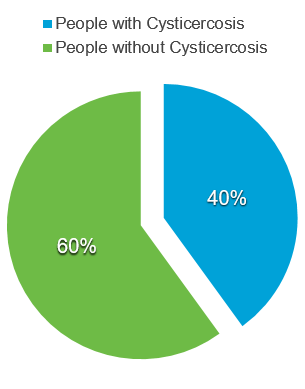
This ground breaking result led to further research, and over 15 years later, Neurocysticercosis is now identified as a leading cause for Epilepsy and Seizures.
The prevention of cysticercosis is very much possible, with Anti Parasitic and Inflammatory drugs. Surgery may sometimes be necessary to treat cysts in certain locations, or when patients are non responsive to drug treatment
VI. DECLARATIONS
- Ethical Approval and Consent to participate - Not Applicable
- Consent for publication - Not Applicable
- Competing interests - Not Applicable
- Funding - Not Applicable
- Availability of Data and Materials - The Data used in this article is available Online, and can be accessed using the information (Hyperlinks, DOI’s) provided in the References segment of this article.
- Author’s Contributions - Abhineet Maini (Student, Troy High School | Internationally Published Author) is the sole contributor to this Article.
- Acknowledgements: Christopher M. DeGiorgio, M.D. Et al., Luz M Moyano Et al., Centers for Disease Control and Prevention, Luis Felipe Santos Menezes Et al.
- Author’s Information:
Name: Abhineet Maini
Institutional Affiliation: Troy High School, Fullerton, CA
E-Mail: abhineetmaini@gmail.com
Conclusion
Neurocysticercosis is a leading cause for Epilepsy and seizures, which are diseases related to the irregular functioning of neuronic nerve impulses, the basics of which were established in the majority of this article. Neurocysticercosis is a preventable helminthic infection of the Central Nervous System, which can have complex implications not just in the Neurological framework, but in the overall coordination of organs and organ systems of the human body.
References
[1] Menezes LFS, Sabiá Júnior EF, Tibery DV, Carneiro LdA and Schwartz EF (2020) Epilepsy-Related Voltage-Gated Sodium Channelopathies: A Review. Front. Pharmacol. 11:1276. doi: 10.3389/fphar.2020.01276 [2] Zack MM, Kobau R. National and state estimates of the numbers of adults and children with active epilepsy — United States, 2015. MMWR. 2017;66:821–825. DOI: 10.15585/mmwr.mm6631a1. html [3] Moyano LM, Saito M, Montano SM, Gonzalvez G, Olaya S, Ayvar V, González I, Larrauri L, Tsang VC, Llanos F, Rodríguez S, Gonzalez AE, Gilman RH, Garcia HH; Cysticercosis Working Group in Peru. Neurocysticercosis as a cause of epilepsy and seizures in two community-based studies in a cysticercosis-endemic region in Peru. PLoS Negl Trop Dis. 2014 Feb 13;8(2):e2692. doi: 10.1371/journal.pntd.0002692. PMID: 24551255; PMCID: PMC3923674. [4] DeGiorgio CM, Medina MT, Durón R, Zee C, Escueta SP. Neurocysticercosis. Epilepsy Curr. 2004;4:107–11.
Copyright
Copyright © 2022 Abhineet Maini. This is an open access article distributed under the Creative Commons Attribution License, which permits unrestricted use, distribution, and reproduction in any medium, provided the original work is properly cited.

Download Paper
Paper Id : IJRASET40107
Publish Date : 2022-01-28
ISSN : 2321-9653
Publisher Name : IJRASET
DOI Link : Click Here
 Submit Paper Online
Submit Paper Online


